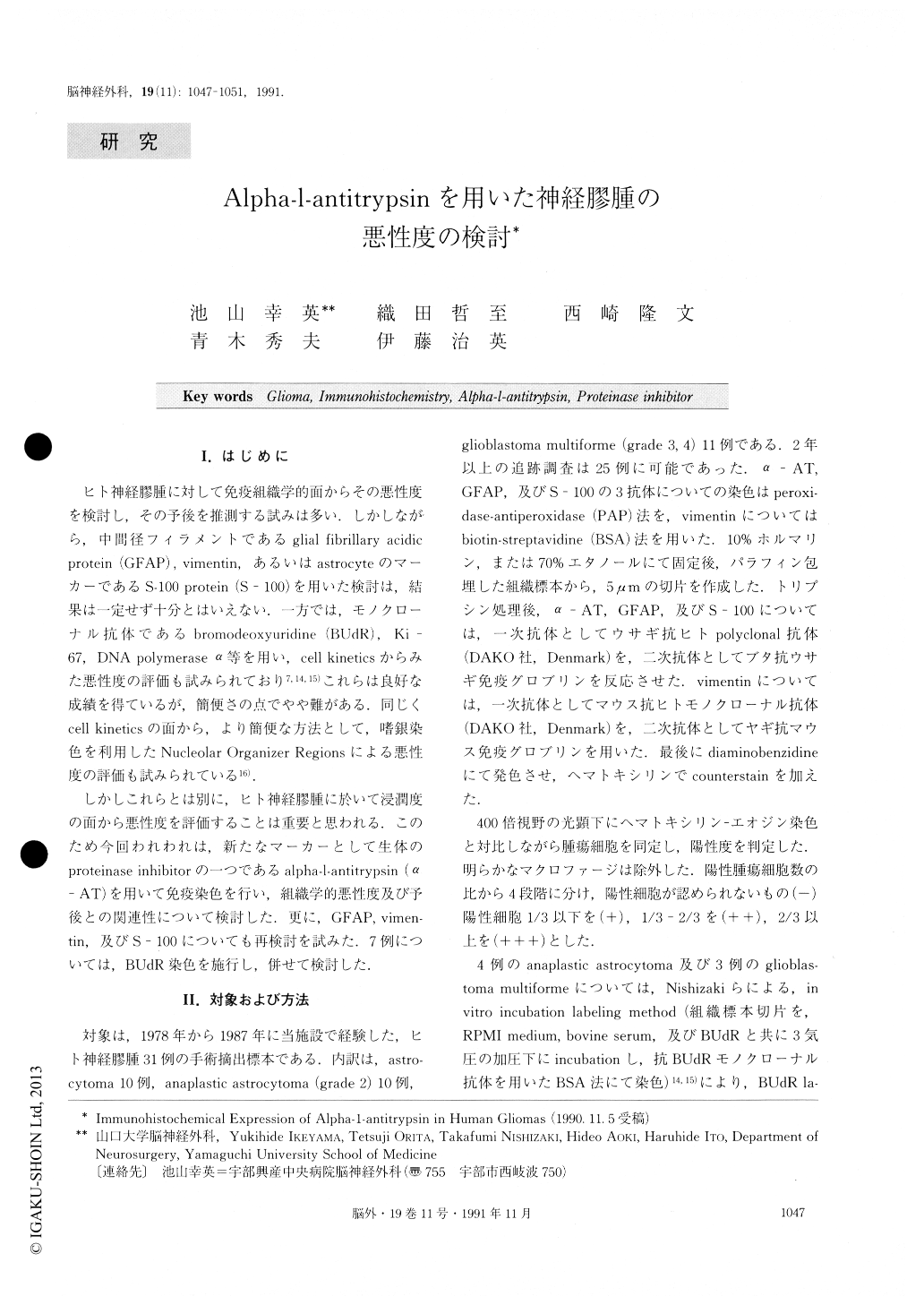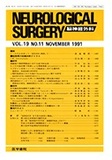Japanese
English
- 有料閲覧
- Abstract 文献概要
- 1ページ目 Look Inside
I.はじめに
ヒト神経膠腫に対して免疫組織学的面からその悪性度を検討し,その予後を推測する試みは多い.しかしながら,中間径フィラメントであるglial fibrillary acidicprotein(GFAP),vimentin,あるいはastrocyteのマーカーであるS−100 protein(S−100)を用いた検討は,結果は一定せず十分とはいえない.一方では,モノクローナル抗体であるbromodeoxyuridine(BUdR),Ki—67, DNA polymerase α等を用い,cell kineticsからみた悪性度の評価も試みられており7,14,15)これらは良好な成績を得ているが,簡便さの点でやや難がある.同じくcell kineticsの面から,より簡便な方法として,嗜銀染色を利用したNucleolar Organizer Regionsによる悪性度の評価も試みられている16).
しかしこれらとは別に,ヒト神経膠腫に於いて浸潤度の面から悪性度を評価することは重要と思われる.このため今回われわれは,新たなマーカーとして生体のproteinase inhibitorの一つであるalpha-1-antitrypsin(α-AT)を用いて免疫染色を行い,組織学的悪性度及び予後との関連性について検討した.更に,GFAP, vimen-tin,及びS-100についても再検討を試みた.7例については,BUdR染色を施行し,併せて検討した.
Abstract
The present paper describes the analysis of immuno-staining patterns of four antibodies, alpha-1-antitrypsin ( α - AT), glial fibrillary acid protein (GFAP), S - 100 protein (S - 100), and vimentin in 31 human gliomas. The gliomas were 10 astrocytomas, 10 anaplastic astrocytomas, and 11 glioblastoma multiforme tumors. The immunoreactivity for vimentin and α - AT that is one of the main proteinase inhibitors changed in pro-portion to the degree of histological malignancy. As α - AT was localized mainly in the cytoplasm of tumor cells and partially in extracellular spaces, it was thought to have been derived from tumor cells. Prepa-rations immunolabelled with anti-GFAP and anti-S-100 showed no increasing loss of immunoreactivity parallel with increasing malignancy.

Copyright © 1991, Igaku-Shoin Ltd. All rights reserved.


